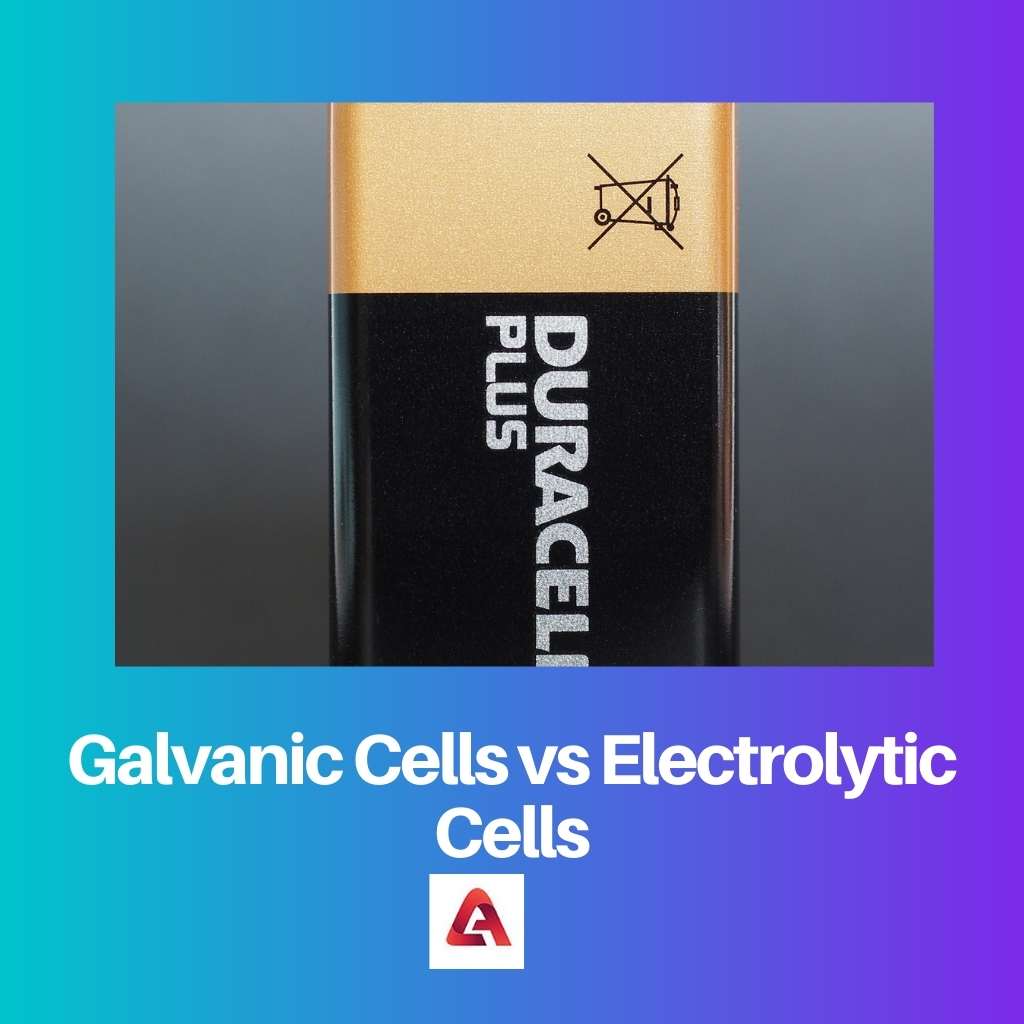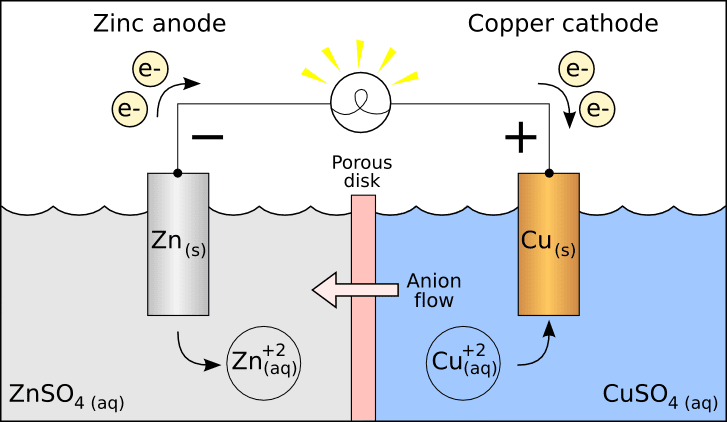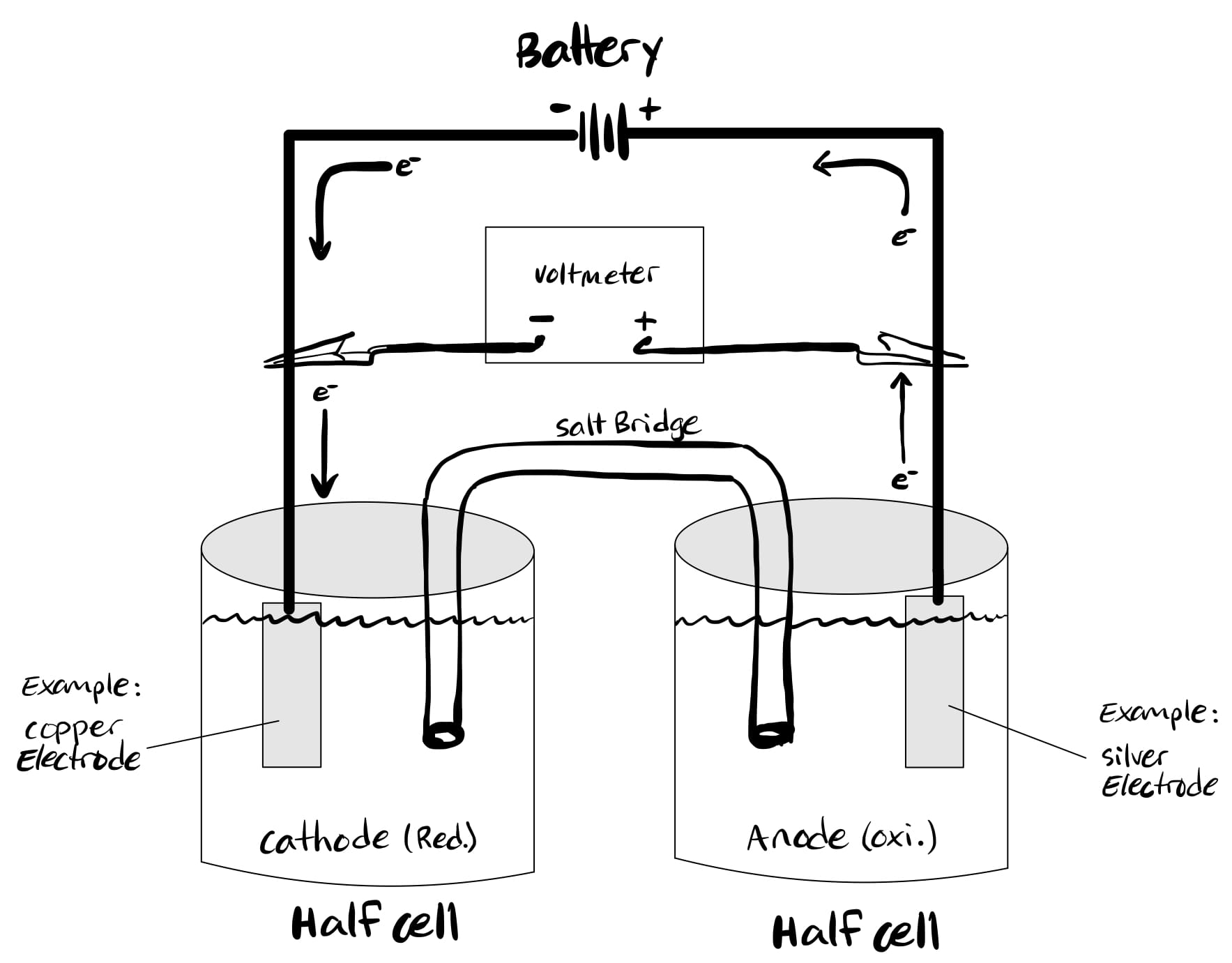Galvanic or electrolytic cells are one of the most important components hugely necessary in the semiconductor industry and beyond.
Galvanic cells are used in batteries helping us power up every size of appliances whereas electrolytic cells are used for electroplating. The mechanism and the output of both cells are different.
Key Takeaways
- Galvanic cells generate electrical energy through spontaneous redox reactions, while electrolytic cells consume electrical energy to drive non-spontaneous reactions.
- In galvanic cells, the anode is the site of oxidation, and the cathode is the site of reduction; in electrolytic cells, the anode is where reduction occurs, and the cathode is where oxidation occurs.
- Galvanic cells are commonly used in batteries, whereas electrolytic cells are employed in processes like electroplating and electrolysis.
Galvanic Cells vs Electrolytic Cells
Galvanic cells generate electrical energy from a spontaneous redox reaction between two metal electrodes, creating a flow of electrons to produce electrical energy. Electrolytic cells use electrical energy to drive a non-spontaneous redox reaction, producing metals, purifying metals, and electroplate metals.

Galvanic cells are also known as electrochemical cells where a spontaneous reaction takes place to produce electricity.
The galvanic cells consist of two half cells that are placed in different containers and are connected by a salt bridge or a porous partition.
Electrolytic cells can be described as the opposite of galvanic cells as they convert electric energy into chemical energy.
In the overall reactions, the Gibbs energy is positive and thus non-spontaneous redox reactions take place in an electrolytic cell.
Comparison Table
| Parameters of Comparison | Galvanic Cells | Electrolytic Cells |
|---|---|---|
| Definition | Galvanic cells are electrochemical cells that can produce electricity. | Electrolytic cells are also electrochemical cells but they use electric energy to facilitate chemical reactions. |
| Conversion | Galvanic cells convert chemical energy into electric energy. | Electrolytic cells convert electric energy into chemical energy. |
| Reaction | In a galvanic cell, a spontaneous reaction takes place. | In electrolytic cells, non-spontaneous redox reactions take place. |
| Charges | The negative charge is at the anode while the positive charge is at the cathode. | The negative charge is at the cathode while the positive charge is at the anode. |
| Oxidation | The process of oxidation takes place at the anode. | Oxidation takes place at the cathode. |
| Placement | Half cells are placed in different containers and they are connected via a salt bridge. | In an electrolyte solution, the electrodes are placed in the same container. |
| Applications | Used in batteries. | Mostly used in electroplating and also in purifying copper. |
What are Galvanic Cells?
In a galvanic cell, the redox reaction that causes the transfer of electrons among species is spontaneous. And, this amount of electric work is done by the Gibbs energy for the spontaneous reaction.
The two half cells in a galvanic cell are kept separately in two containers and connected with a salt bridge. The metallic electrodes present in each half cell are dipped in an electrolyte solution.
If the electrodes are dipped in the same electrolyte, there is no requirement for the salt bridge.
There are six parts in a galvanic cell, namely, anode, cathode, salt bridge, half cells, an external circuit, and load.
In this cell, the anode has a negative potential and the cathode has a positive potential, both concerning the solution.
So, when the switch is set on, due to the potential difference created electrons start flowing from anode to cathode.
The concept of galvanic/electrochemical cells was introduced to study the thermodynamic properties of fused salts. Given below is the reaction of Daniel’s cell, a type of galvanic cell.
At cathode: Cu 2+ + 2e– → Cu (reduced)
At anode: Zn → Zn2+ + 2e– (oxidized)
Galvanic cells are an example of how a simple reaction produces energy and that energy can be utilized for producing electricity. These cells are used in batteries.

What are Electrolytic Cells?
While voltaic (galvanic) cells are driven by spontaneous chemical reactions, electrolytic cells are driven by non-spontaneous redox reactions.
It converts electric energy into chemical energy, just the opposite of galvanic cells. In an electrolytic cell, oxidation occurs at the cathode while reduction takes place at the anode.
This sometimes creates confusion because oxidation takes place in the anode. So, it is easier to remember that, in an electrolytic cell, the anode is positive while the cathode is negative.
The overall Gibbs energy is positive as the reactions are non-spontaneous. Electrolytic cells can be used for the electrolysis of certain compounds, like water.
If water is electrolyzed using an electrolytic cell, the formation of gaseous oxygen and hydrogen will take place.
The mechanism of an electrolytic cell can be well understood using the example of molten sodium chloride (NaCl). The cell reactions are given below.
At Cathode: [Na+ + e– → Na] x 2 (reduced)
At Anode: 2Cl– → Cl2 + 2e– (oxidized)
Cell Reaction: 2NaCl → 2Na + Cl2
To carry out the above reactions, two electrodes are dipped into the molten NaCl and when the electricity is passed through the circuit, the cathode becomes negatively charged.
So, sodium ions (positively charged) are attracted towards the cathode and thus forming metallic sodium on reduction.

Main Differences Between Galvanic Cells and Electrolytic Cells
- Galvanic cells are electrochemical cells that can produce electricity whereas electrolytic cells are also electrochemical cells but they use electric energy to facilitate chemical reactions.
- Galvanic cells convert chemical energy into electric energy whereas electrolytic cells convert electric energy into chemical energy.
- In a galvanic cell, a spontaneous reaction takes place whereas, in electrolytic cells, non-spontaneous redox reactions take place.
- In a galvanic cell, the negative charge is at the anode while the positive charge is at the cathode whereas, in an electrolytic cell, it is the opposite.
- The process of oxidation takes place at the anode in a galvanic cell but in the case of an electrolytic cell, it takes place in the cathode.
- Half cells are placed in different containers in a galvanic cell whereas in the electrolytic cells the electrodes are present in the same container.




